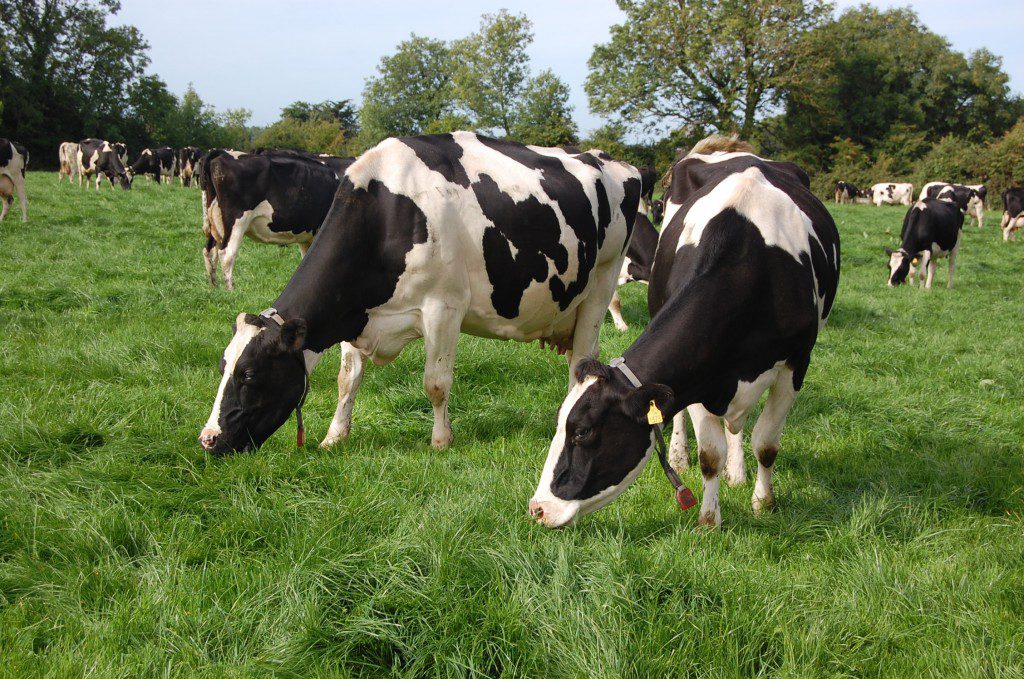To obtain some insight into how the dairy sector faired in 2021 and what lies in store for the sector in 2022, Agriland spoke with Dr. Joe Patton, head of knowledge transfer with Teagasc.
This year was a bumper year for milk prices, but rising input costs have put a dampener on the sector recently.

head of knowledge transfer with Teagasc
2021 review
Reviewing 2021 in terms of the dairy sector, Dr. Patton said: “Within the farm gate it has been a relatively good year for dairy farmers.
“On a lot of farms, we have seen technical performance improvements; milk solids, fertility, breeding and milk production in general are going in the right direction.
“Coupled with good milk prices, it has been a reasonably good year for dairy farmers, but that is somewhat tempered by high and rising input costs, with fertiliser being the most noted one.”
These high input costs are likely to erode much of the profits made in 2021, he said.
“Outside the farm gate, it has been a difficult year for dairy farmers in many respects, with a lot of talk around policy changes. That discussion, outside of farmers’ control, has dampened the sentiment on dairy farms.
“If dairy farmers did not pay attention to the news, it was a good year for them.”
Outlook 2022
Giving his outlook for 2022, he said: “One big issue that farmers will face in 2022 is input costs, particularly around fertiliser.
“At an individual farm level, there has to be a response in terms of nutrient management, but that will only bring you so far as there will still be a requirement for inputs.
“The challenge will be balancing input cost with efficiencies. There has been a lot of discussion around fertiliser and will it be affordable, but that needs to be balanced with feeding the herd.
“You have to take the whole view on this; one input can not dictate everything, but certainly farmers should be studious and careful regarding nutrient management next year.
“Knowing your soil nutrient status and knowing how you will use your slurry for the first three months of 2022 is a major management challenge,” he added.
Another issue that farmers will face in 2022 is around the area of new veterinary medicine regulations. Looking at the changes in antibiotic regulations next year, cell counts are going to become very important on farms.
“This is the year for farmers to be really tight about it; it might play in people’s favour in reducing marginally high stocking rates.
“But certainly next year might be the year to ‘grasp the nettle’ on cell counts,” he said.
As always, weather and weather events have a huge impact on farming – often determining if the year was a good or bad one.
“The one thing we would say is that this year, many farmers are heading into the winter with good stocks of silage on farms, which puts people in a good position to deal with weather events.
“Overall, it has been a relatively good year for dairy farmers in prospect, but there are a lot of moving parts. So farmers need to be very consistent and careful in managing what goes on within their own farm gate.”
Advice for farmers
In terms of advice for dairy farmers for 2022 and beyond, Dr. Patton said: “We talk an awful lot about technology, but what does technology mean to people? Does it mean gadgets? Technology is only worth talking about if it is going to make a difference to your margin or labour input.
“We would really be encouraging farmers to look at the technology around information on the farm. The capacity for technology to delivery better decisions, precision on grass measuring, precision on soil fertility, will all help manage nutrients better.
This, too, stretches to precision around animal health, he said.
“Practically, around cell counts. Milk recording is a major technology that has improved in terms of update, but could improve further.
“The breeding technology is available – sometimes we forget about how good the Irish system is at times.
“The Irish system is able to do individual breeding plans for farms, sexed semen is on the way in terms of its better availability and choice. So, there is capacity for people to engage with these technologies,” he added.
“What we are really trying to get people to look at is within their control, there has never been more information available for farmers to make good decisions.
“Really for 2022, we want farmers to continue engaging better with those available sources of information. Once you have the information available, good farming decisions can be made.
“Those twerks and those more precise decisions, will make a big difference to the bottom line at the end of the year,” Dr. Patton said.
